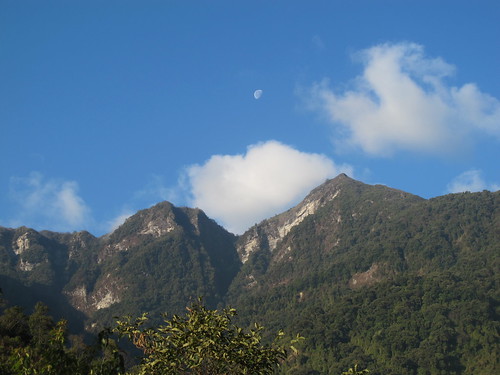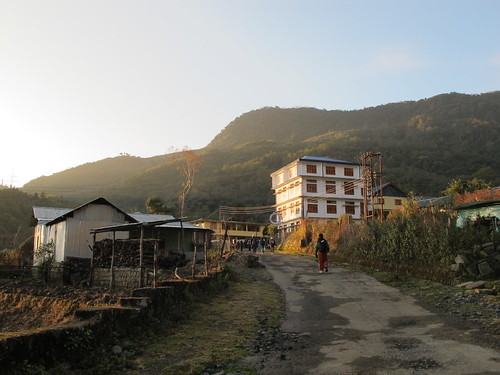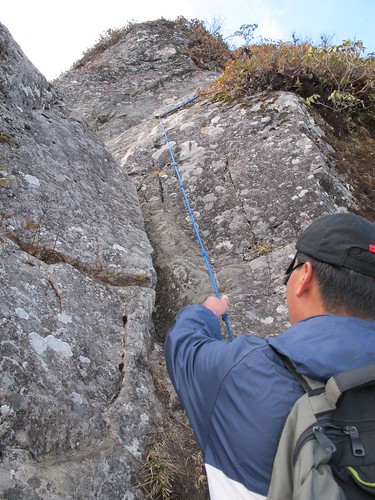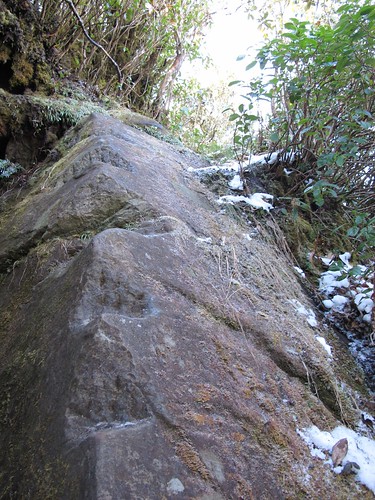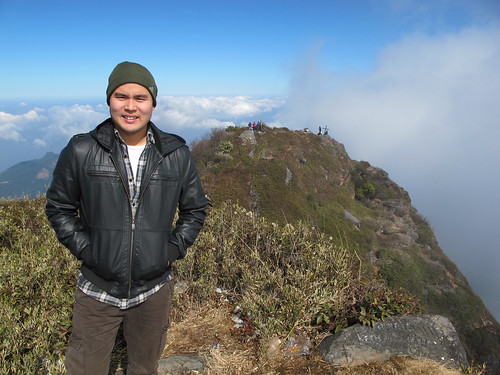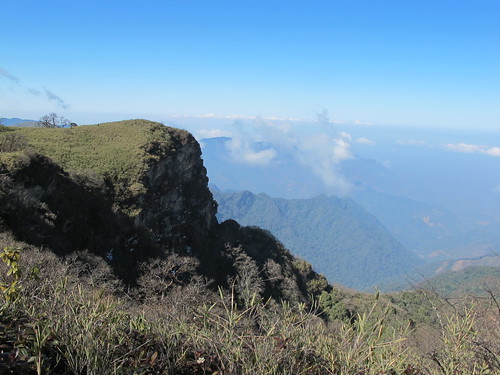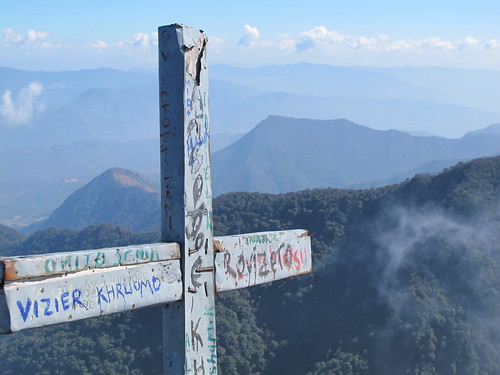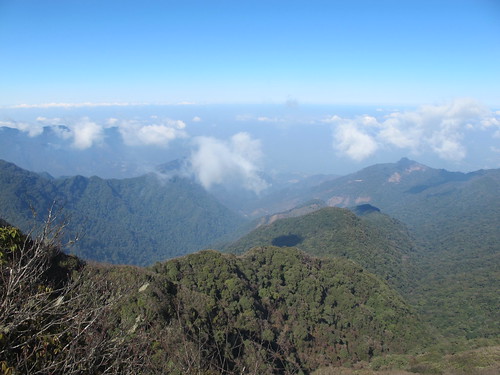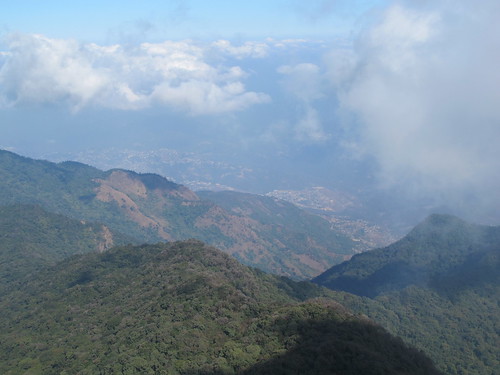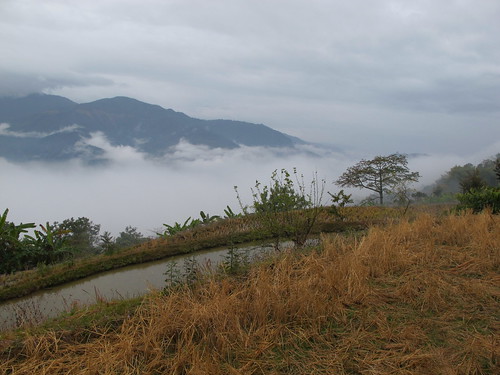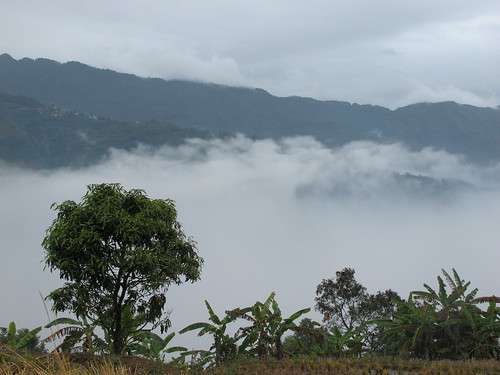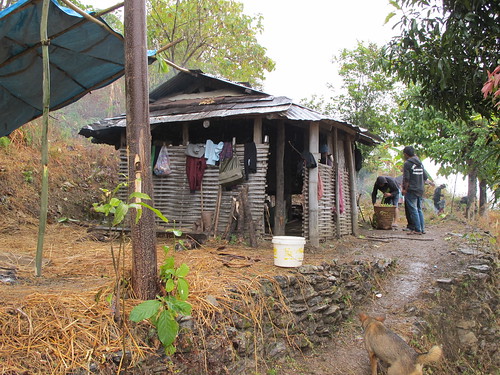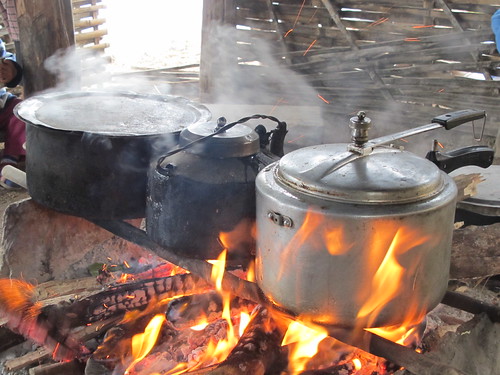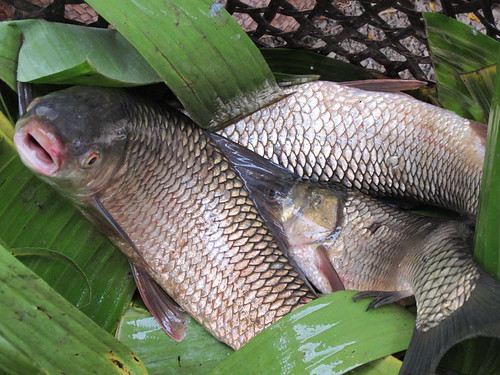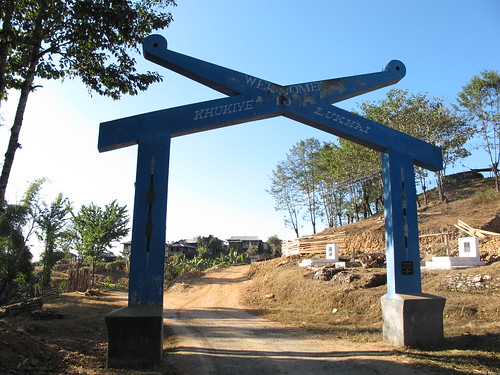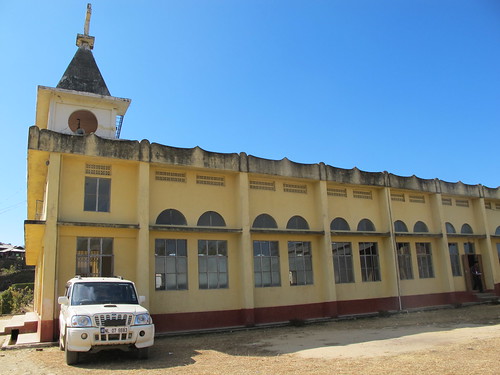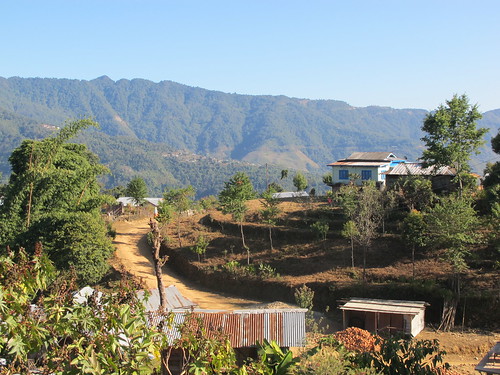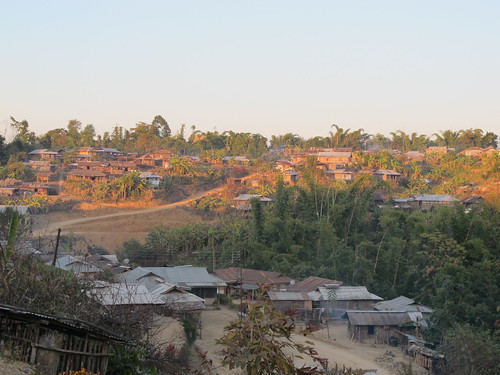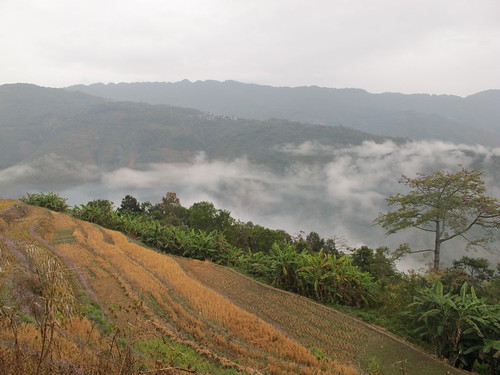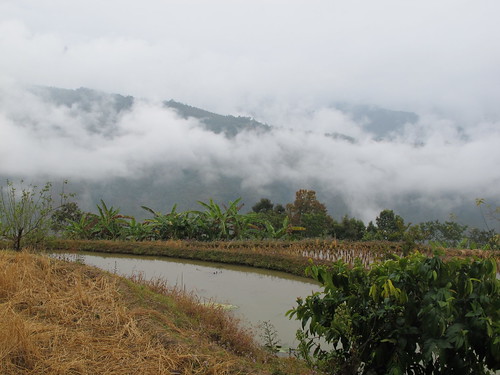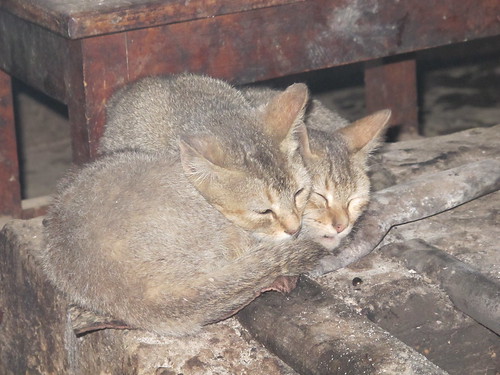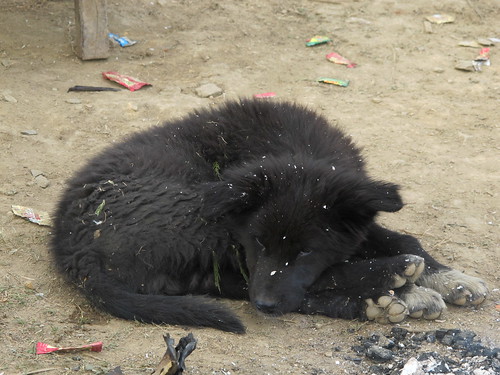Even though I've looked at Sumi tone for years (and I can speak another tone language, Mandarin), I still feel like I'm tone-deaf when I listen to the language. Fortunately, I've been getting a lot of help with Sumi tones thanks to my friend Cana, who apart from being a gifted artist, is also a gifted musician.
Sumi has 3 contrastive tones: low, mid and high, all of which are fairly level (except when there's intonation involved). This means that there is a change in pitch height results in a new word, e.g.
apuh [à.pù] ‘father’
apu [a.pu] ‘water scoop’
appu [à.pú] ‘son’
So apuh with low tone means 'father' and appu with high tone means 'son'. The change in spelling is a fairly recent one, which hasn't been universally adopted. But the main thing is, when you say the words out, the consonants and vowels are all the same, the only difference is pitch.
I find the high tone easiest to perceive, but I often get the low and mid tones mixed up. I was actually pretty amazed (I suppose I shouldn't have been, but I still was) when Cana told me that the low and mid tones are closer together in pitch than the high. That was something I'd demonstrated in an acoustic instrumental study of the language a few years ago.
The other problem I have is, when I speak Sumi, I have a tendency to put a slightly higher pitch on the last syllable of a word that I try to stress. As an example, the word ana [ànà] with low tones on both syllables means 'rice'.
But every time I answer the question "Ana chu va chu mphi?" 'Have you eaten yet?' (lit. "Have you eaten rice yet or not?"), I end up saying "Ana chu va." 'I've eaten' (lit. 'I've eaten rice'), pronouncing ana as what speakers perceive as [àná], with high tone on the second syllable. I know it should be low tone, but somehow part of me just wants to stress the whole word, and I end up using a higher pitch to do so.
At least ana [àná] with high tone doesn't mean anything in Sumi, but speakers can still tell it's wrong.
In a similar vein, when I was staying with friends in Kohima a few weeks ago, I was trying to learn a few phrases in Kohima Angami / Tenyidie. In contrast to Sumi, Tenyidie has 5 tones, all of which are fairly level as far as I can tell, and I still can't tell the difference between most of the tones. Anyway, it didn't stop me from learning a few key phrases.
One evening, when asked if I was hungry, I replied with A merü mo. I thought I was saying "I'm not hungry." The verb merü means 'to be hungry' when there's low tone on the final syllable.
Without realising it again, I'd said merü with a high tone on the second syllable.
My friends all burst into laughter immediately. It turns out I'd said "I haven't vomitted."
Sumi has 3 contrastive tones: low, mid and high, all of which are fairly level (except when there's intonation involved). This means that there is a change in pitch height results in a new word, e.g.
apuh [à.pù] ‘father’
apu [a.pu] ‘water scoop’
appu [à.pú] ‘son’
So apuh with low tone means 'father' and appu with high tone means 'son'. The change in spelling is a fairly recent one, which hasn't been universally adopted. But the main thing is, when you say the words out, the consonants and vowels are all the same, the only difference is pitch.
I find the high tone easiest to perceive, but I often get the low and mid tones mixed up. I was actually pretty amazed (I suppose I shouldn't have been, but I still was) when Cana told me that the low and mid tones are closer together in pitch than the high. That was something I'd demonstrated in an acoustic instrumental study of the language a few years ago.
The other problem I have is, when I speak Sumi, I have a tendency to put a slightly higher pitch on the last syllable of a word that I try to stress. As an example, the word ana [ànà] with low tones on both syllables means 'rice'.
But every time I answer the question "Ana chu va chu mphi?" 'Have you eaten yet?' (lit. "Have you eaten rice yet or not?"), I end up saying "Ana chu va." 'I've eaten' (lit. 'I've eaten rice'), pronouncing ana as what speakers perceive as [àná], with high tone on the second syllable. I know it should be low tone, but somehow part of me just wants to stress the whole word, and I end up using a higher pitch to do so.
At least ana [àná] with high tone doesn't mean anything in Sumi, but speakers can still tell it's wrong.
In a similar vein, when I was staying with friends in Kohima a few weeks ago, I was trying to learn a few phrases in Kohima Angami / Tenyidie. In contrast to Sumi, Tenyidie has 5 tones, all of which are fairly level as far as I can tell, and I still can't tell the difference between most of the tones. Anyway, it didn't stop me from learning a few key phrases.
One evening, when asked if I was hungry, I replied with A merü mo. I thought I was saying "I'm not hungry." The verb merü means 'to be hungry' when there's low tone on the final syllable.
Without realising it again, I'd said merü with a high tone on the second syllable.
My friends all burst into laughter immediately. It turns out I'd said "I haven't vomitted."
